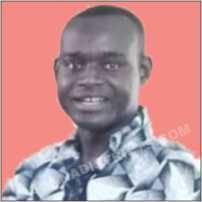

Ethnicity and Religion
The Birim North District is heterogeneous in terms of ethnicity. The Akans who are mostly Akyems constitute about 75 percent of the entire population in the district. Other tribes such as the Ewes, Gas, Krobos and Guans and people of Northern Ghana origin constitute the remaining 25 percent of the population. The non-Akyems are sometimes land owners and traditional leaders in some communities in the district. One can therefore infer a less tendency towards ethnic conflict. There is therefore a high degree of homogeneity in cultural terms.
This can therefore encourage consensus building and promote the development of the district. With regard to religious beliefs, there are Three main religions practiced by the people in the district. Christianity is the most dominant religion constituting 92.7 percent, Islam and traditional religion commands 4.3 percent and 3 percent respectively. The large proportion of Christians in the district influences people’s values, interests and perceptions, which affect their choice and preference in society.
There are also fewer tendencies for religious conflict due to the level of homogeneity. This homogeneity brings about social cohesion and a high degree of tolerance. Moreover, these affiliations serve as good channels for information dissemination in the district, which can help to accelerate development. However, the level of ethnic and religious dominance by one ethnic and religious group may bring about marginalization of the minority groups. Therefore there is the need to reflect this aspect in the planning processes, so that the interest of the minorities is well catered for.
Migration is very important in the development process of every District. This indicates whether there will be available labour to take up jobs to be able to sustain the economy of the District or not. With the Birim North being an agrarian one, the outflow and inflow of the people should be captured. The data collected indicated that about 2% of the entire District population surveyed normally leaves the District every year while those who come in constitute about 4%. This in migration figure is high as a result of the boom in illegal gold mining activities in the District. The migrants are mainly energetic young men between the ages of 21-48 years. The males constitute about 76% of the migrants into the District. Internal movements in the District are also significant. During the rainy season some of the inhabitants leave their places of abode and go to their villages within the District to carry out their farming activities.
Majority of these migrants have low educational levels. About 74 percent of them have at least completed basic education, 18 percent have completed secondary, vocational and technical schools, and 5 percent have attained tertiary education while the rest have never acquired any formal education.
Date Created : 11/23/2017 9:38:38 AM










 facebook
facebook
 twitter
twitter
 Youtube
Youtube
 +233 593 831 280
+233 593 831 280 0800 430 430
0800 430 430 GPS: GE-231-4383
GPS: GE-231-4383 info@ghanadistricts.com
info@ghanadistricts.com Box GP1044, Accra, Ghana
Box GP1044, Accra, Ghana